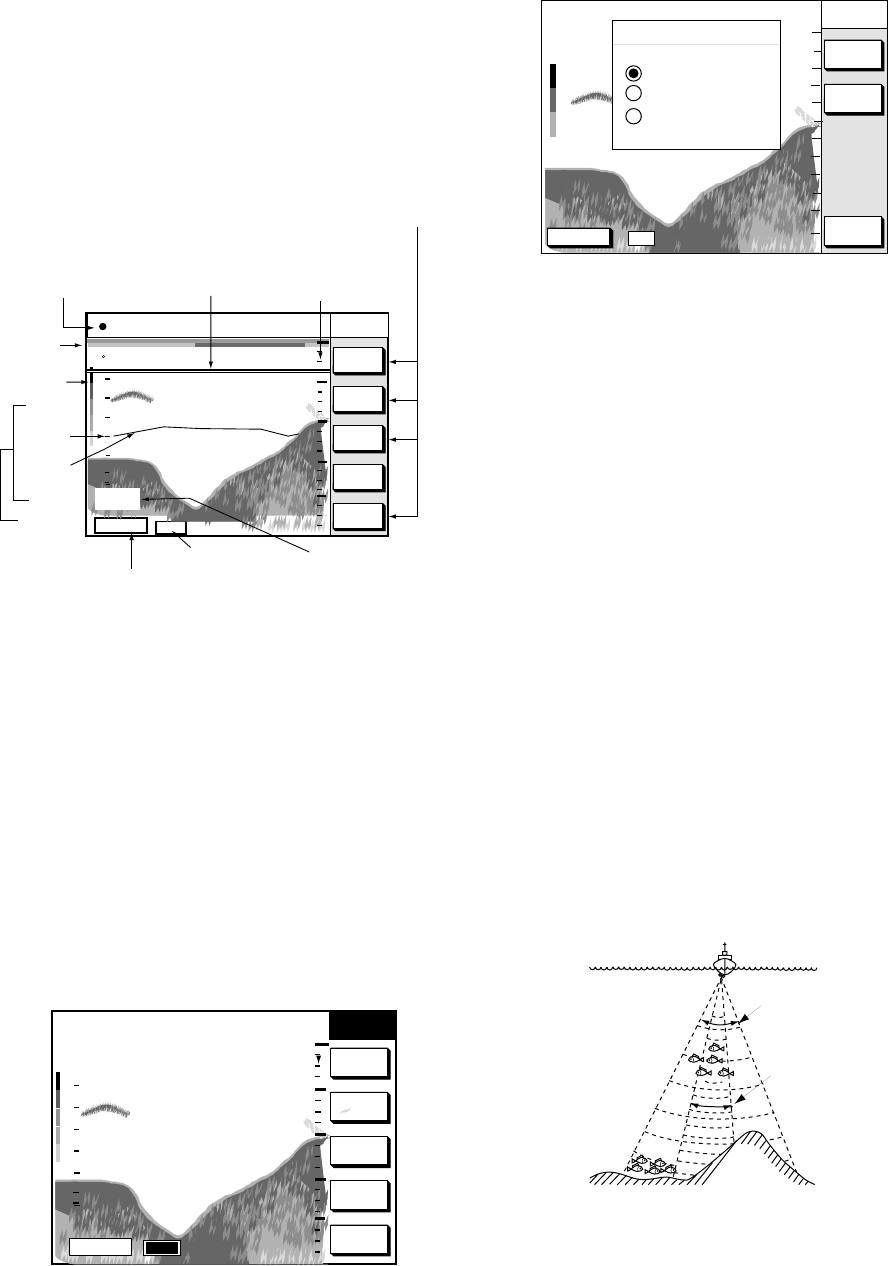
2. VIDEO SOUNDER OPERATION
2-2
2.2 Sounder Display
Description
The figure below shows all indications and
markers which may appear on the normal
sounder display.
Normal sounder display indications,
markers
SNDR
FUNC
SHIFT
GAIN
RANGE
SOUNDER
135° 12.345' E
34° 12.345' N
SPD
CSE
16.3kt
245.8°
MODE/
FREQ
50k
F
Nav information
window
Color
bar
Functions for
soft keys
Variable
Range
Marker
(white)
Depth scale
Tx frequency
GPS status
Depth
20
30
40
50
80
60
40
0
Temp.
scale
Water
temp.
Graph
Water
temp.
display
30.0
15.0
GPS 3D
Minite
mark
Indications on the normal sounder display
Note: The water temperature graph can be
turned on or off. (See TEMP GRAPH
on page 11-4.) The temperature scale
is fixed between 20-80°F (0 to 30°C).
The normal sounder display shows either the
50 kHz picture or 200 kHz picture. To switch
between these pictures, do the following:
1. Press the [SNDR] key several times to
show the normal sounder display.
SOUNDER
GAIN
RANGE
SNDR
FUNC
SHIFT
MODE/
FREQ
20
30
40
50
30
20
0
50k
GPS 3D
Normal sounder display
2. Press the MODE/FREQ soft key. The
display changes as below.
DGPS 3D
RETURN
SELECT
50kHz
SOUNDER
50
100
150
0
50k
0.0
SELECT
200kHz
MODE/FREQ
▲
AUTO CRUISING
AUTO FISHING
MANUAL
▼
Mode/freq window
3. Press the SELECT 200kHz (or SELECT
50kHz) soft key.
4. Press the RETURN soft key to manually
close the window, or wait 10 seconds and
the window automatically closes.
50 kHz picture
The sounder uses ultrasonic pulses to detect
bottom conditions. The lower the frequency
of the pulse, the wider the detection area.
Therefore, the 50 kHz frequency is useful for
general detection and judging bottom
condition.
200 kHz picture
The higher the frequency of the ultrasonic
pulse the better the resolution. Therefore,
the 200 kHz frequency is ideal for detailed
observation of fish school.
50 kHz
200 kHz
Comparison of transducer frequencies


















